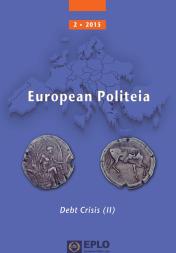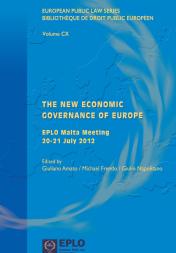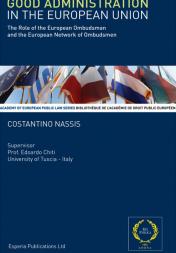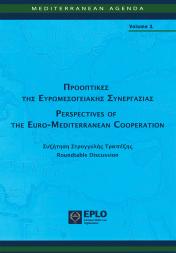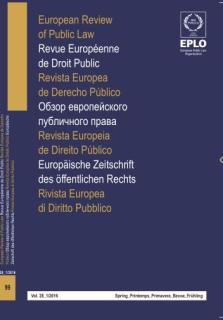
THE EUROPEAN BANKING UNION:
AN INTRODUCTION TO THE LEGAL FRAMEWORK
CHRISTOS V. GORTSOS
Professor of International Economic Law at the Panteion University of Athens.
He also has teaching assignments at the Izmir University of Economics,
the Europa Institut of the Saarland University, the Europa Institut of the University of Zurich,
and the Law Faculty of the National and Kapodistrian University of Athens.
Since 2008, several legal acts have been adopted by EU financial regulators (i.e. mainly the European Parliament, the ECOFIN Council, the European Commission and to a certain extent also the European Central Bank), which reshaped the regulatory and supervisory framework pertaining to the EU banking system. The legislative process for adopting such acts has also been improved with the creation of the European Banking Authority. The legal acts adopted in order to enhance the stability of the disrupted EU banking system are categorised in two groups, since they address problems relating to two different crises (even though the first partly triggered the second): (a) The first group contains a set of legal acts adopted as a regulatory response to the recent (2007-2009) international financial crisis. For the most part, regulatory measures in this set were taken over from the international financial reform agenda, mainly the work orchestrated by the Financial Stability Board and soft law rules adopted by the Basel Committee on Banking Supervision on micro- and macro-prudential banking regulation, and the resolution of failing credit institutions. (b) The second group contains legal acts adopted as a regulatory reaction to the current fiscal crisis in the euro area, which became manifest in 2010. The main by-product of this response, as regards financial law, was the establishment of the European Banking Union (EBU), and, in particular, of the Single Supervisory Mechanism (SSM), the Single Resolution Mechanism (SRM) and the Single Resolution Fund (SRF), while there are also recent proposals for the creation of a European Deposit Insurance Scheme (EDIS) and a European Deposit Insurance Fund (EDIF). The establishment of the SSM, the SRM and the SRF constitute bold institutional novelties. The creation of the SSM is an element for reform, i.e., improved financial supervision, which has been discussed for a long time. However, maintaining resolution tasks on a national scale, while supervision is centralised, would pose considerable risks. Thus, the SRM and the SRF should be viewed as complementary to the SSM and these three components of the EBU should be considered in unison, given that shared liability for bank resolutions requires centralised supervisory oversight.
Depuis 2008, les autorités réglementaires financières européennes (à savoir principalement le Parlement européen, le Conseil Ecofin, la Commission européenne ainsi que la Banque centrale européenne dans une certaine mesure) ont adopté plusieurs instruments juridiques, qui ont remodelé le cadre réglementaire et de contrôle du système bancaire européen. La procédure législative d'adoption de tels actes a aussi été améliorée par la création de l'Autorité bancaire européenne. Les instruments juridiques adoptés en vue de renforcer la stabilité d'un système bancaire européen perturbé sont classés en deux groupes, dans la mesure où ils traitent de problèmes relevant de deux crises différentes (même si la première a en partie déclenché la seconde): a) Le premier groupe comprend un ensemble d'actes juridiques adoptés au titre de réponse réglementaire à la récente crise financière internationale (2007-2009). En majeure partie, les mesures réglementaires qui relèvent de cette catégorie ont pris la relève du programme de réforme financière internationale, notamment le travail orchestré par le Conseil de stabilité financière et les règles non contraignantes adoptées par le Comité de Bâle sur le contrôle bancaire concernant la réglementation bancaire micro ou macroprudentielle, et la résolution des dé-faillances des établissements de crédit. b) Le second groupe comprend les actes juridiques adoptés au titre de réaction réglementaire à la crise fiscale actuelle de la zone euro qui s'est manifestée en 2010. Le principal produit dérivé de cette réponse, concernant le droit financier, a été la création de l'Union bancaire européenne (UBE) et, en particulier, celle du Mécanisme de surveillance unique (MSU), du Mécanisme de résolution unique (MRU) et du Fonds de résolution unique (FRU); parallèlement, des propositions ont aussi été faites récemment en vue de la création d'un Système européen de garantie des dépôts (SEGD) et d'un Fonds européen de garantie des dépôts (FEGD). La création du MSU, du MRU et du FRU représente des innovations institutionnelles majeures. La création du MSU est un élément de réforme, c'est-à-dire de contrôle financier amélioré, qui était discuté depuis longtemps. Cependant, le fait de maintenir les tâches de résolution au niveau national, alors que le contrôle est centralisé, pourrait comporter des risques considérables. Par conséquent, le MRU et le FRU devraient être vus comme étant complémentaires du MSU et ces trois composants de l'UBE devraient être considérés ensemble, étant donné que la responsabilité partagée de la résolution des défaillances bancaires requiert une surveillance prudentielle centralisée.








